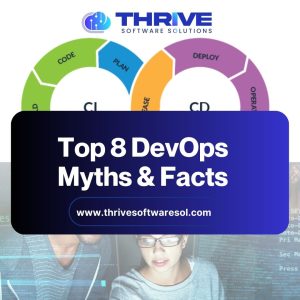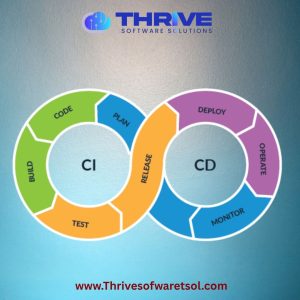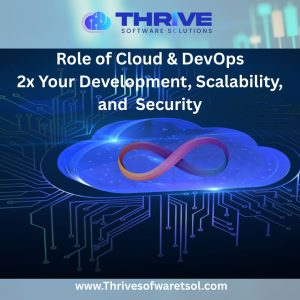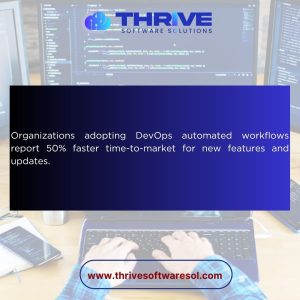If your digital roadmap feels stuck, chances are you’re wrestling with DevOps Myths that blur what actually drives faster releases, higher quality, and lower risk. These misconceptions can delay cloud migration, inflate tooling costs, and distract teams from the real work of improving flow, feedback, and learning. Cutting through DevOps Myths helps leaders focus on measurable business outcomes, accelerated time-to-market, stronger reliability, and better cost optimization rather than chasing trends or buying tools without strategy.
Learn more about How DevOps revolutionizing software delivery in 2025
Here are the top eight DevOps Myths debunked with facts, practical guidance, and commercial considerations to help you choose the right DevOps consulting, services, and platforms for your organization.
Myth 1: DevOps is just a toolchain you can buy
Fact: Tools amplify good practices; they don’t create them. One of the stickiest DevOps Myths is that buying a CI/CD platform, IaC tool, or observability suite equals transformation. In reality, success depends on culture (shared goals, blameless learning), lean flow (small batch sizes, WIP limits), and continuous feedback (monitoring, A/B testing). Yes, invest in modern tooling—GitOps, Terraform, Kubernetes, APM—but anchor spending to clear KPIs: lead time, deployment frequency, change failure rate, MTTR. Choose vendors that fit your operating model and compliance needs, not the loudest demo.
Myth 2: DevOps replaces Ops and ITIL
Fact: DevOps modernizes operations; it doesn’t erase it. Another of the DevOps Myths suggests Ops goes away. In practice, platform engineering and SRE elevate operational excellence with product thinking, SLOs, error budgets, and golden paths for developers. ITIL processes aren’t discarded; they’re streamlined—change control becomes automated approvals via policy-as-code, incident response becomes chatops-driven with real-time telemetry. The outcome is a stronger partnership: Ops builds reliable self-service platforms; product teams ship safely and own their services end-to-end.
Myth 3: Automation alone equals DevOps
Fact: Automate wisely, not blindly. CI/CD pipelines, automated testing, and infrastructure as code are vital, but automation without feedback loops just accelerates waste. This is one of those DevOps Myths that causes over-scripting while ignoring value stream bottlenecks. Focus first on mapping the flow of work, removing handoffs, and building quality in (shifting left on tests, security scans, and SBOM generation). Then automate the healthiest process you can design. Measure impact with DORA metrics and business KPIs, not just pipeline run counts.
Myth 4: DevOps is only for born-in-the-cloud companies
Fact: Regulated enterprises do DevOps—safely. Many legacy-heavy organizations believe DevOps is for startups, but high-performing banks, insurers, and healthcare providers are proof otherwise. The key is incremental adoption: start with a single value stream, introduce trunk-based development, add deployment automation, and expand with a repeatable playbook. Hybrid cloud, mainframe integration, and vendor constraints require thoughtful sequencing—but that’s exactly where strong DevOps services, reference architectures, and SLAs de-risk the journey. Enterprise DevOps is real—and audit-ready.
Myth 5: You need to hire unicorn “DevOps engineers”
Fact: Build cross-functional teams and a platform capability. Another persistent entry in DevOps Myths is that a few 10x hires will solve systemic issues. Sustainable results come from durable teams that own a product, supported by a platform team that abstracts paved roads for CI/CD, secrets, compliance, and observability. Upskill your people with targeted enablement—pairing, workshops, and coaching—rather than chasing scarce titles. When using managed DevOps services, insist on knowledge transfer, runbooks, and co-ownership over pure outsourcing.
Myth 6: DevOps weakens security and compliance
Fact: DevSecOps scales security with speed. Embedding security as code—SAST/DAST, dependency scanning, container image policies, and supply chain controls—reduces risk earlier and cheaper. Policy-as-code enforces guardrails (e.g., SOC 2, ISO 27001, HIPAA) at merge time instead of at change advisory boards weeks later. Treat threats as defects, track them in the same backlog, and measure risk burn-down. Beware of DevOps Myths that pit speed against control; the best programs prove higher release cadence with stronger evidence of compliance.
Myth 7: You must adopt microservices and Kubernetes to “do DevOps”
Fact: Architecture follows outcomes. Many teams rebuild systems around microservices only to move complexity, not value. DevOps excels with monoliths, microservices, and everything between—as long as you improve flow, testability, and operability. Start with modularity, automated tests, and blue/green or canary deploys. If Kubernetes fits (multi-tenancy, portability, elasticity), great standardize with platform engineering. If not, managed PaaS or serverless may deliver more ROI. Don’t let DevOps Myths push you into tech you don’t need yet.
Can AI replace DevOps engineers?
Myth 8: DevOps is too expensive and risky
Fact: It’s a phased investment with compounding ROI. The right approach starts small, targets a measurable constraint (e.g., lead time), and funds the next phase from realized savings, fewer incidents, less toil, faster feature delivery. Budget for change management, training, and platform foundations alongside tools. When evaluating vendors, look beyond list prices: include TCO, support responsiveness, exit costs, and alignment to your RFP success criteria. This is one of those DevOps Myths that vanishes when you track value stream improvements quarter by quarter.
How to turn facts into results
- Tie goals to business outcomes: time-to-market, reliability SLOs, NPS, cost-to-serve.
- Pick a lighthouse product, publish DORA baselines, and iterate in 90-day increments.
- Establish a platform team to standardize CI/CD, IaC, secrets, observability, and incident response.
- Use vendor-agnostic patterns across AWS, Azure, and Google Cloud to avoid lock-in where it matters.
- Partner selectively for DevOps consulting and managed services that include enablement, not just delivery.
When you replace DevOps Myths with evidence, you can prioritize the few capabilities that move the needle: lean flow, continuous delivery, platform foundations, and built-in security. If you’re ready to move beyond DevOps Myths, start with one value stream, measure relentlessly, and invest where the data says performance improves. If you are looking for a trusted DevOps solutions provider in Washington, USA, get in touch with Thrive Software Solutions today.






